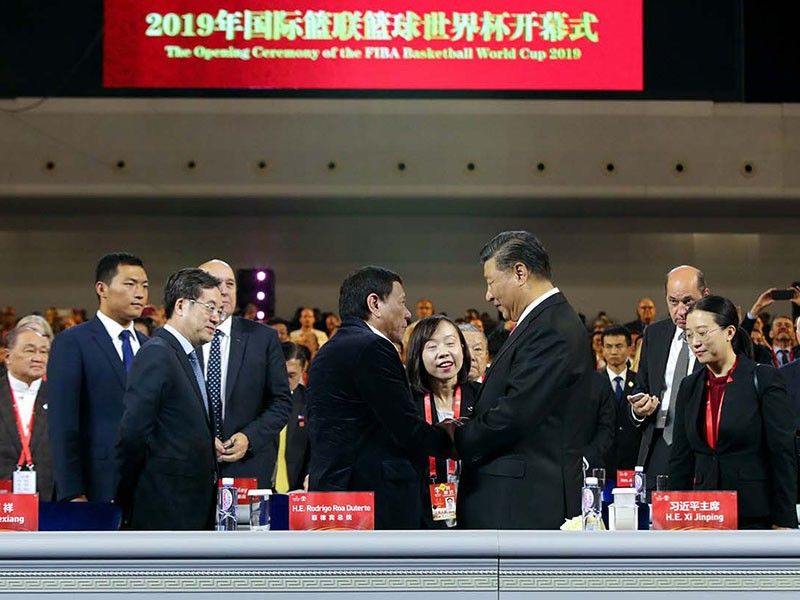Commentary: The Philippines’ complicity in creating China’s vision of regional order

Prior to his fifth working visit to Beijing, President Rodrigo Duterte announced that he would push for the immediate adoption of the Code of Conduct (COC) for the parties in the South China Sea dispute. He promised that he would press for the early drafting of the agreement to reduce tension and minimize the risk of incidents and miscalculation in the face of concerns about the delay in its drafting, which apparently is caused by China’s delaying tactics.
Duterte explained that he wanted the COC because he does not want “trouble” for the Philippines. His sense of urgency for the early conclusion of a COC came in the aftermath of two incidents in the West Philippine Sea: first, the Chinese vessel’s ramming of a Filipino fishing boat in the Reed Bank; and second, the Armed Forces of the Philippines’ sounding off the alarm over the growing Chinese naval presence near the Tawi-Tawi Islands.
Pushing for the ASEAN-China COC
The idea of an ASEAN-China COC originated on Sept. 2, 2002 after the two parties signed the “Declaration on a Code of Conduct (DOC) for the South China Sea.” The DOC was primarily a political statement of broad principles of behavior aimed to stabilize the situation in the South China Sea and prevent accidental outbreak of conflict in the disputed areas.
ASEAN’s original goal is to transform the DOC to a legally binding agreement and not just a broad statement of principles.
More than fifteen years after China and the ASEAN signed the DOC, the two parties had not even started the negotiations for the COC by the simple reason that China declared that the time was not yet ripe to do so.
On May 18, 2017, however, China and the ten member states of ASEAN suddenly announced that they finally agreed on a framework for a COC on the South China Sea. Foreign Minister Wang Yi said that he would like to wrap up the deliberations on a COC, indicating that China is positive toward the conclusion of such agreement.
On Aug. 6, 2017, the ASEAN and Chinese foreign ministers endorsed the framework of the COC negotiation. The agreement on a framework is a small step forward in putting in place a conflict-management mechanism to prevent any escalation of the South China Sea dispute.
The agreed framework, however, is short on details and contains many of the principles and provisions already mentioned in the 2002 DOC.
ASEAN insists that the COC must be legally binding. However, Beijing wants that adherence to the agreement must be voluntary like the 2002 DOC. Furthermore, although the framework includes new reference to the prevention and management of incidents, the phrase legally binding is absent from the text along with its geographical scope, and enforcement and arbitration mechanisms.
The framework agreement aims to exclude the U.S. and Japan as external actors “who interfere” in the dispute, and marginalize ASEAN’s role in the South China Sea dispute as it emphasizes Southeast Asian claimant states only versus China.
It is framing the COC negotiation as an issue between China and the claimant states only. It is expected that the negotiation for a COC will be a long and protracted process, and most possibly a frustrating one since ASEAN and China are still in quandary on whether the agreement will be legally binding or not.
The Philippines’ complicity
As the country coordinator of the ASEAN-China Dialogue, Duterte declared that the Philippines is committed in advancing an early adoption of the COC in the South China Sea with relevant parties.
During his meeting with President Xi-Jinping, he reasoned out that the “absence of the COC that is to be observed by affected countries has caused numerous conflicts in the subject waters that could have been prevented by a document that will regulate their actions.”
Xi welcomed the Philippine president’s efforts to hasten the conclusion of negotiation for a COC as he described the agreement as a creative way to set rules for the resolution of the South China Sea dispute. The Chinese leader emphasized that the joint efforts for the early conclusion of the COC should “exclude external disturbances in order to focus on cooperation and developments to safeguard regional peace and stability.”
As Premier Li Keqiang said on Nov. 13, 2018 in Singapore, his country hoped to complete the COC negotiations within three years. There are indications, however, that the COC that will be concluded in 2022 will be different from what ASEAN has envisioned in 2002.
In 2002, ASEAN’s goal was to negotiate a legally binding COC that would enable the regional association to pursue a soft-balancing policy on China’s growing naval ambition in the South China Sea.
The 2022 COC will most likely contain provisions that will allow China to assume a leadership role vis-à-vis the ASEAN in managing but not resolving the dispute. It will also ensure that external stakeholders, such as the U.S. and Japan, will be prevented from being actively involved in the dispute.
This will eventually allow Beijing to establish a Sino-centric regional order in Southeast Asia. In effect, the Philippines under the Duterte administration is playing a significant role in ensuring that China will realize its vision of a Southeast Asian order under its suzerainty.
- Latest





























